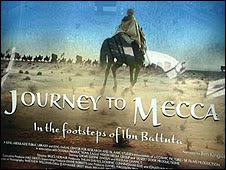



Ghadhabu kali imezuka Nigeria baada ya Saudi Arabia kutangaza kudhibiti idadi ya raia watakaokubaliwa kufanya hija.
Balozi wa Saudia nchini Nigeria Khalid Abdu Raboh ameiambia BBC kwamba kwanzia mwaka huu mahujaji watakubaliwa kufanya hija mara moja pakee kwa miaka mitano.Balozi huyo amesema masharti haya yametolewa kwa sababu za kiusalama.
Kwenye hija ya awali msongamano wa mahujaji ulisababisha ajali na kupelekea vifo vya mamia ya watu.Ingawa waumini wa Kiisilamu wanatakiwa kufanya hija moja katika maisha yao, mabwenyenye wa Nigeria wamekuwa wakifanya Hija kila mwaka.
Serikali ya Nigeria imependekeza sharti la sasa kuondolewa ikisema wengi wa walionuia kufanya Hija mwaka huu wamepata tiketi zao.

History and Meaning of the Hajj

The hajj is commanded in the Qur'an - "And pilgrimage to the House is a duty unto God for mankind, for him who can find the way thither" (3:97). Its rites were established by the Prophet Muhammad, but Muslim tradition dates it back to Adam and Abraham, who were instructed by angels in the performance of the rites. The hajj was one of the last public acts of worship performed by Muhammad before his death.
In part, the hajj commemorates the stories of Abraham, Hagar and Ishmael and it has been assigned various other meanings throughout the centuries. For many Muslims, one of the most meaningful aspects of the pilgrimmage is the unifying effect of bringing together believers from all over the world to meet and worship together.
Despite the large numbers seen in Mecca each year, only a small percentage of Muslims have fulfilled the duty. Those who have done so have the privilege of adding the title hajj or hajji to their names, and may display other symbols of having undertaken the

Rituals and Sites of the Hajj
Upon arrival at the boundary of Mecca (about six miles from the Ka'ba), pilgrims enter the state of ihram (purity) in which they will remain throughout the hajj. Males entering this pure state don the ihram garments - two white, seamless sheets wrapped around the body - and sandals. This aspect of the rite not only signifies the state of holiness the pilgrims have entered, but contributes to a sense of equality and unity by removing visual indicators of class, wealth and culture. Women usually dress in white with only faces and hands uncovered. While in the state of ihram, pilgrims must not cut their nails or hair, engage in sexual relations, argue, fight or hunt.
When he or she enters the city of Mecca, the pilgrim first walks around the Ka'ba seven times (this is called the tawaf, or circumambulation) while reciting the talbiya, then kisses or touches the Black Stone in the Ka'ba, prays twice towards the Station of Abraham and the Ka'ba and runs seven times between the small mountains of Safa and Marwa.
The second stage of the hajj takes place between the 8th and 12th days of Dhu al-Hijja, beginning with a sermon (khutba) at the mosque on the 7th day. On the eighth day and night, the pilgrim stays at Mina or Arafat. On the ninth day, the ritual of wuquf ("standing") takes place at the small hill of Jabal al-Rahma in Arafat. The pilgrim then returns to Muzdalifa, a small town within the Meccan boundaries, to stay the night.
The tenth day is Eid al-Adha (The Feast of Sacrifice), a major holiday observed by all Muslims. For those participating in the hajj, the day is spent in Mina, where the pilgrim sacrifices an animal to commemorate Abraham's sacrifice and throws seven small stones at each of three pillars on three consecutive days (the pillars represent sins and devils). The pilgrim then returns to Mecca, where he or she once again performs the tawaf (circumambulation of the Ka'ba). The head is then shaved or the hair is trimmed, which marks the end of the state of ihram.

No comments:
Post a Comment